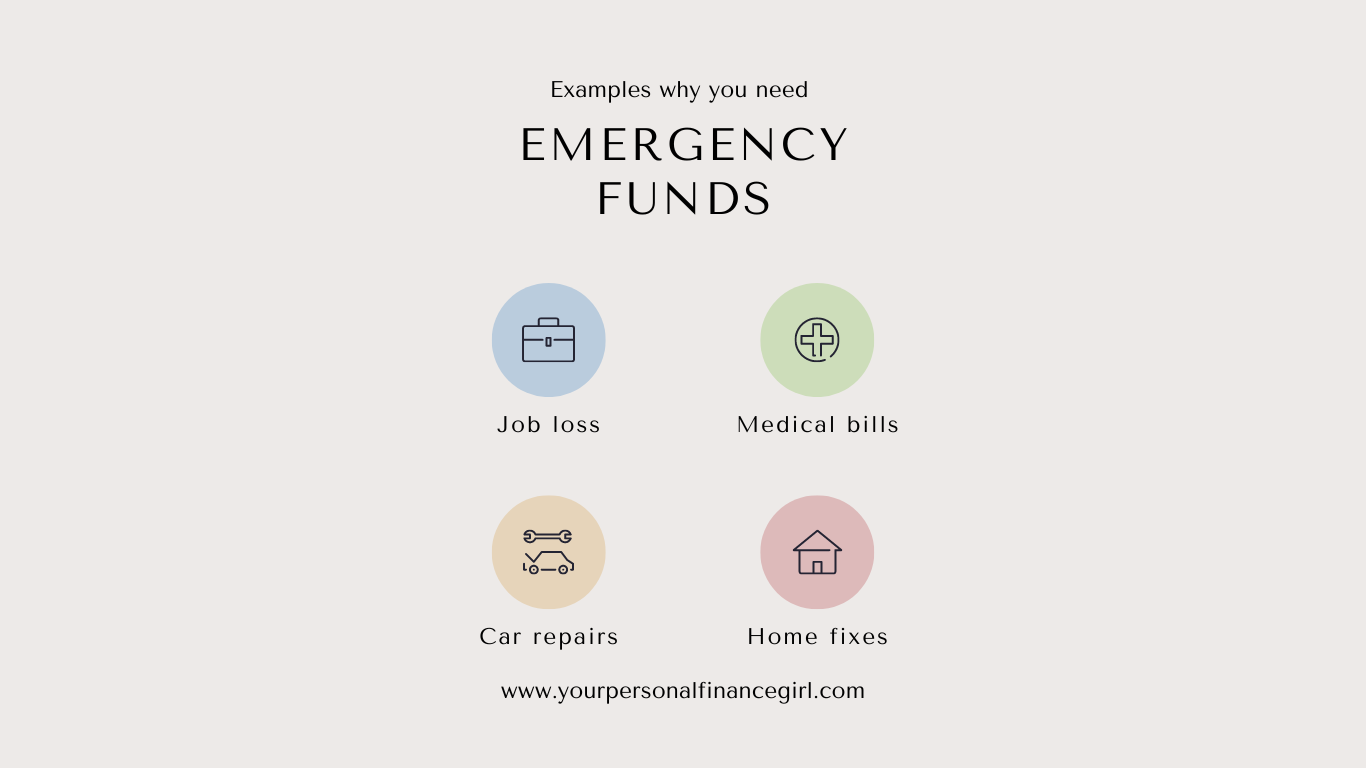Over time, I have heard people ask the same question repeatedly. How do I grow my emergency fund? For some, it’s born out of the determination to progress, and for others, it’s curiosity in its purest form.
Whichever reason yours is, I am here to help inform that decision by answering your questions.
An emergency fund is money you put aside to ensure that your life does not come to a halt when faced with an unplanned financial demand. It can help you handle medical bills, job loss, rent hikes, car repairs, and other unforeseen situations requiring funding.
Why do I need it?
Each day comes with its bag full of surprises. Unforeseen financial emergencies such as an unexpected medical bill, a broken appliance, a loss of income, a damaged cell phone etc, aren’t exactly preventable when you live day to day in a capitalist society. See your emergency fund as your own little but smart way of protecting yourself. You’re saving for rainy days by putting money aside—large or small— and that’s absolutely commendable!
How much do I need in it?
The amount you should have in your emergency savings fund wholly depends on your personal situation. Typically, your emergency fund should have 3 – 6 months’ worth of your monthly expenses.
Also, putting money aside can be difficult if your income isn’t a fixed amount or you are living paycheck to paycheck. But don’t get discouraged, even a small amount can provide some financial security.
How do I go about it?
-
Make consistent contributions.
Choose that amount — whether it’s #1000 or #10,000 — and commit to saving it at regular intervals; per month, per week, or per paycheck. The key is that it needs to become a habit, not a recurring struggle that leaves you stressing your cash flow.
-
Set slow and steady savings goals.
Rather than looking to save three months’ worth of expenses right away, save for one month. Or two weeks. Whatever it takes to make your first goal seem easily attainable. Reaching that first goal can give you the motivation to keep going. Set your second goal higher — and the third even higher. And this is how habits are formed!
-
Set up automated savings.
The easiest way to save money is never to touch it in the first place. Set up a separate account just for your emergency fund. And have your chosen contribution amount deposited automatically, directly by your employer or your bank. You can also make use of special apps that allow automation. You may not immediately see the need for it, but this approach will ensure there’s no chance you’ll forget to put this money aside or use it for other things.
-
Don’t increase monthly spending
and avoid lifestyle creep.
Once saving has become automatic, don’t be lulled into a false sense of financial security and let spending creep up again. For instance, if you gave up impulsive buying every month only to replace it a couple of months later with a new monthly shopping habit, you’re not saving at all!
-
Avoid over-saving:
Beware of devoting too much of your savings to your emergency fund. Your emergency fund should be the cash you can access quickly in times of need. While you shouldn’t lose sight of the importance of building your emergency fund, don’t stop enjoying life either. Find a balance.
All things considered, having an adequate emergency fund is critical to your financial well-being. When you have these unplanned expenses covered, you’re able to recover quicker and get back on track towards reaching your larger savings goals.
Be realistic, but try to reach your ultimate savings goal as fast as you can. That alone might make life more enjoyable. With this, you can grow your emergency fund. Good Luck!
You can watch this video on how to successfully build an emergency fund if you’d prefer to listen instead.




